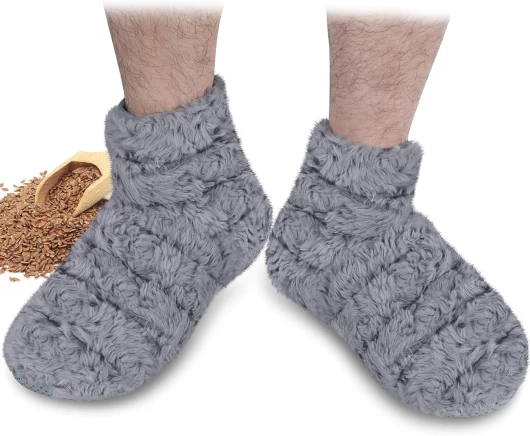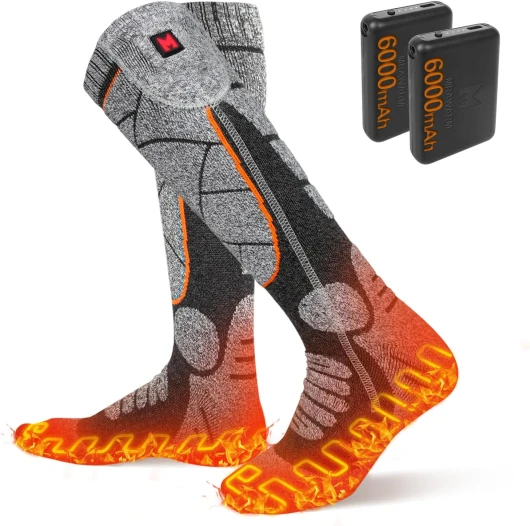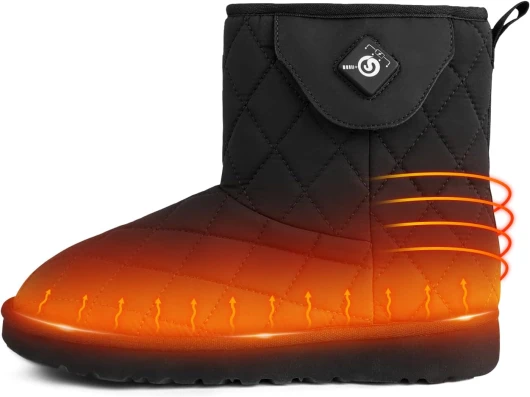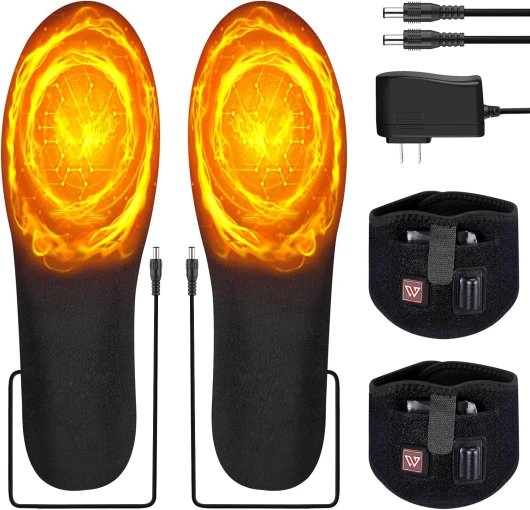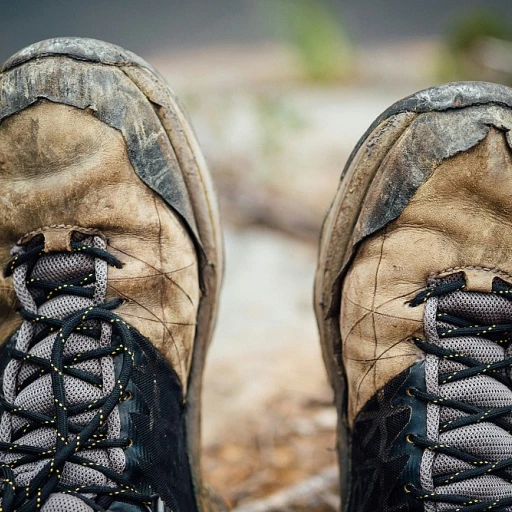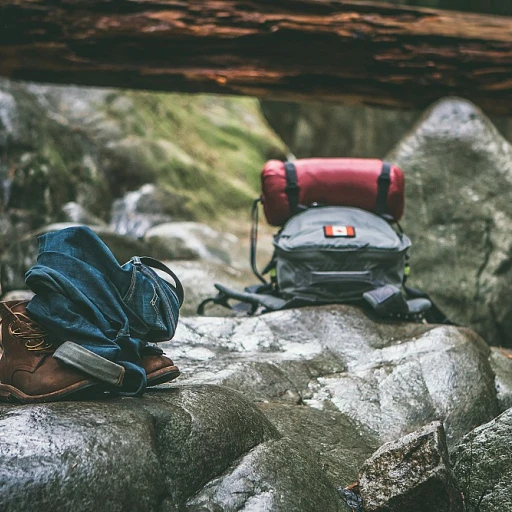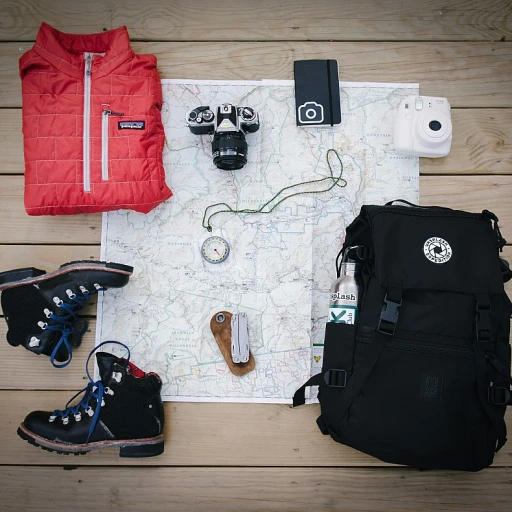
Understanding Heated Boots
Decoding Battery-Heated Footwear
As outdoor enthusiasts, it’s hard to ignore the chill that winter can bring, making heated footwear an attractive option for those frigid adventures. Heated boots have been gaining traction in the hiking community as an innovative solution to keeping cold feet at bay, providing warmth when traditional boots fall short. These boots are equipped with battery-powered elements that deliver warmth directly to your feet, promising comfort even in the most biting of winds.
Heated boots work by integrating boot heaters within the booties, ensuring an even distribution of heat across the foot. The technology often involves rechargeable batteries that allow hours of continuous warmth, ideal for long, cold hikes. Many models also feature heated insoles or heated liners, enhancing the base layers of warmth for a cozy experience.
Curious about how these products differ from standard ski boots or snow boots? While traditional options rely heavily on insulation to save your feet from freezing temps, heated products take it a step further by actively keeping the warmth alive. Just imagine the comfort of stepping into a world where cold feet are a thing of the past!
As you explore the offerings on the market, you will notice products designed specifically for men and women, addressing anatomical differences in feet structure. For those wondering about flexibility, heated socks or heated gloves can complement these systems, offering warmth to extremities during outdoor lavish activities. Don't forget to consider these as part of your hiking gear arsenal, especially when embarking on long-lasting winter excursions.
Benefits of Heated Boots for Hikers
An Edge Over Changing Temperatures
For hiking enthusiasts often battling the dilemma of cold feet, heated boots offer a contemporary solution. As the name implies, these boots incorporate innovative heaters and batteries to ensure your feet remain comfortably warm. This technology can be particularly invaluable during cold seasons or high-altitude treks, where drops in temperature can be sudden and severe.
Energy Efficiency and Customizable Warmth
One of the most significant advantages of heated boots is their rechargeable heated technology. With top brands increasing battery lifespan, adventurers no longer need to worry about their boots running out of warmth mid-journey. Many models offer long-lasting heat settings that can be adjusted according to specific needs, providing a customizable experience akin to heated insoles or heated gloves.
Comfort and Functionality
A common concern with heated products is their impact on comfort and functionality, but contemporary heated boots are designed with high-quality materials that ensure they remain both functional and comfortable. These boots cater to a diverse range of users, including women and men. Some models even feature integrated boot heaters that eliminate the necessity for additional heated booties during snowbound adventures.
Greater Accessibility and Convenience
Further enhancing their appeal is the increasing access to these products at competitive prices. Moreover, standard delivery options have significantly improved, allowing hikers to save both time and energy.
Conclusion: The Sensible Choice
These advantages help explain why many hikers are turning to heated boots for their outdoor adventures. As an investment in warmth and comfort, they prove to be a sensible alternative to traditional footwear choices.
Choosing the Right Heated Boots
Picking the Perfect Pair of Heated Boots
Choosing the right heated boots involves several factors that cater to your specific needs, preferences, and the environment in which you plan to use them. Here's a breakdown to help you make an informed decision:
- Purpose: Determine whether you're looking for heated boots for hiking, skiing, or general winter activities. Your intended use will guide the features you prioritize, such as insulation and durability.
- Heating Technology: Evaluate different heating technologies including boot heaters, heated insoles, and rechargeable heated elements. Look for boots with batteries that offer long-lasting heat, ensuring your feet stay warm during extended outdoor excursions.
- Fit and Comfort: Prioritize boots that offer a comfortable fit to accommodate warm foot expansion during prolonged use. Test the fit with the appropriate base layers and socks to ensure a snug but comfortable feel.
- Battery Life: Consider the rechargeable battery life and how easy it is to recharge. Aim for a product with a quick rechargeable capability to minimize downtime.
- Price vs. Quality: While price is a factor, it’s crucial to balance cost with the quality and durability of the product. Investing in a reputable product might save you from frequent replacements.
The convenience of slip-on hiking shoes can be a consideration for those seeking easy on-and-off options, especially in colder climates when dexterity is reduced. Evaluate booties or standards that suit your specific requirements, as these factors contribute significantly to your overall hiking experience.
Maintenance and Care Tips
Tips for Keeping Heated Boots in Optimal Condition
To ensure your heated boots maintain their performance and extend their lifespan, proper maintenance and care are essential. Let's take a look at some practical tips to keep your investment in top shape:- Read and Follow Manufacturer Instructions: Each pair of heated boots comes with specific care instructions. It's important to thoroughly read and adhere to these guidelines to maximize effectiveness and longevity.
- Battery Maintenance: Rechargeable heated boots typically rely on batteries to provide warmth. Always use the recommended chargers and avoid overcharging. It's advisable to remove the batteries when storing the boots for long periods. This helps prevent any unnecessary discharge or damage.
- Avoid Excess Moisture: Just like any footwear, excess moisture can reduce the efficiency of heating systems in the boots. Make sure to dry them properly before storage. Using boot dryers can be particularly effective for both ski boots and heated booties.
- Regular Cleaning: Keeping your boots clean can drastically affect their performance. Use appropriate cleaning products to gently remove dirt and remember to tend to both the exterior material and any interior liners.
- Store Properly: When not in use, place heated boots in a dry, cool environment. Consider storing them in a way that preserves their shape, similar to the considerations you take with standard snow boots or hiking shoes.
- Inspect Wiring and Connections: Whether you're using heated insoles or full boot heaters, check all wiring and connections regularly. Damaged wires or poor connections can significantly impair performance and possibly become a safety hazard.
Comparing Heated Boots to Traditional Options
Traditional vs. Heated: A Comparative Look
When it comes to choosing between traditional hiking boots and their heated counterparts, there are several factors to consider. While traditional boots have long been the standard for hikers, heated boots are making waves with their innovative technology. Here's a closer look at how these options stack up against each other.
Warmth and Comfort
Traditional boots rely on insulation and materials to keep your feet warm, which can be effective but may not suffice in extreme cold. Heated boots, on the other hand, come equipped with boot heaters or heated insoles that actively generate heat, providing a more consistent warmth. This can be particularly beneficial for those who suffer from cold feet during long hikes or in snowy conditions.
Battery Life and Convenience
One of the main considerations with heated boots is the battery life. Most products offer rechargeable batteries that can last for several hours, but it's crucial to ensure they meet your hiking needs. While traditional boots don't require charging, the convenience of adjustable heat settings in heated boots can be a game-changer for comfort.
Price and Investment
Heated boots generally come with a higher price tag due to the technology involved. However, for those who frequently hike in cold environments, the investment can be worthwhile. Traditional boots may save you money upfront, but they might not offer the same level of warmth and comfort.
Versatility and Use
Traditional boots are versatile and can be used for a variety of activities, from hiking to casual wear. Heated boots, while excellent for cold weather hiking, might not be as practical for warmer climates or casual use. It's essential to consider your typical hiking conditions when making a choice.
Gender-Specific Options
Both traditional and heated boots are available in designs for men and women, ensuring a good fit for everyone. However, some heated products, like heated booties or heated socks, offer additional options for those looking for extra warmth without investing in a full pair of heated boots.
Ultimately, the decision between traditional and heated boots depends on your specific needs and hiking habits. Whether you prioritize warmth, price, or versatility, understanding the differences can help you make an informed choice.

